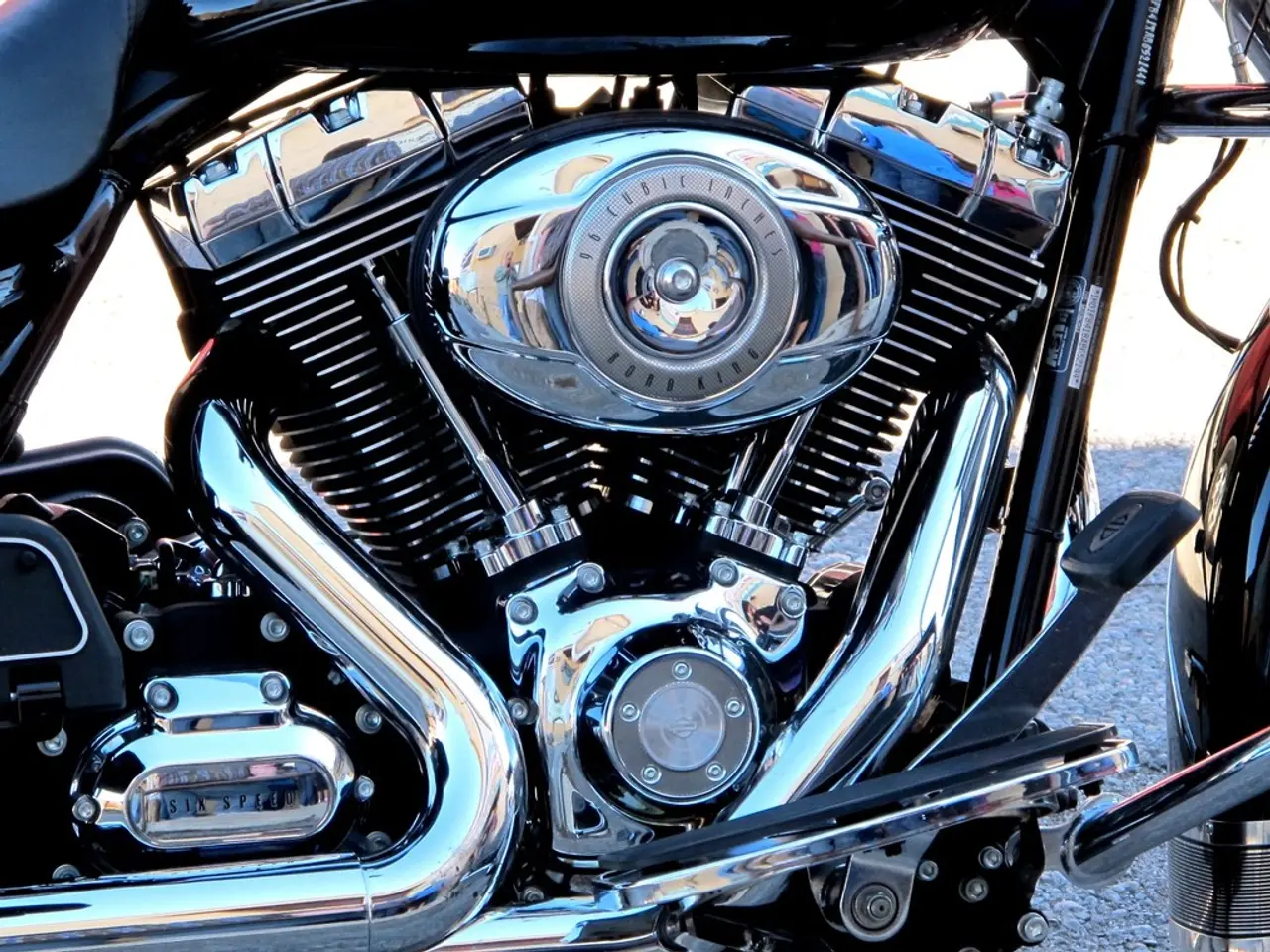Function of Bike's Air Cooling System Explained
In the world of motorcycles, two primary engine cooling systems dominate the landscape: air-cooled and liquid-cooled. Each system has its unique advantages and disadvantages, and understanding these differences can help riders make informed decisions when choosing their two-wheeled companion.
Air-cooled engines, as the name suggests, rely on airflow over engine fins for cooling. This simple design, with fewer components compared to liquid-cooled engines, makes air-cooled engines lighter, improving overall performance, handling, and fuel efficiency. Traditional motorcycle brands like BMW, Porsche, Simson, and Puch have historically employed air-cooled engines, particularly boxer engines with two cylinders.
However, air-cooled engines have some drawbacks. They can be noisier and may produce higher emissions compared to their liquid-cooled counterparts. External factors such as ambient temperature and altitude can significantly impact the cooling efficiency of air-cooled engines, and riders should be vigilant for signs of overheating, especially during slow rides or hot weather.
Air-cooled engines generate heat during combustion, which is conducted to the external surfaces of the engine, particularly the cylinder heads and engine block. As a motorcycle moves, air flows over the fins, absorbing heat and carrying it away from the engine. The fins on the cylinder heads and engine blocks increase surface area for heat transfer, aiding in the cooling process.
Maintenance for air-cooled engines is more straightforward and less time-consuming due to fewer parts involved in the cooling system. Regular cleaning of cooling fins and oil changes are important practices to maintain optimal heat dissipation and engine performance.
On the other hand, liquid-cooled engines use coolant circulated through the engine and a radiator for temperature regulation. These engines are more complex with radiators, pumps, and coolant, which make them heavier than air-cooled engines. However, liquid-cooled engines offer consistent performance across various conditions, as they are less dependent on airflow for cooling.
Liquid-cooled engines may struggle in high-temperature conditions or slow traffic due to the reliance on coolant circulation. Nevertheless, they provide efficient temperature regulation, potentially limiting performance issues in high-temperature environments or during extended periods of high-speed riding.
Maintenance for liquid-cooled engines is more extensive due to additional components and potential coolant changes. It is essential to ensure these engines are serviced regularly to maintain optimal performance and longevity.
In conclusion, both air-cooled and liquid-cooled engines have their merits and drawbacks. Riders should consider factors such as performance, maintenance requirements, and personal preference when deciding which engine type best suits their needs. Lastly, it's important to have appropriate bike insurance, such as a comprehensive two-wheeler insurance policy, for financial protection against accidents, damages, and theft.
Read also:
- Global Content Dissemination Through Cross-Linguistic Voiceovers
- Development of Restaurant Apps: Expenses and Essential Elements
- Time is of the essence
- European transportation's sustainability and competitiveness rely on a "green industrial agreement" that serves the interests of both corporations and residents, as discussed in an Editorial from August 2024.







